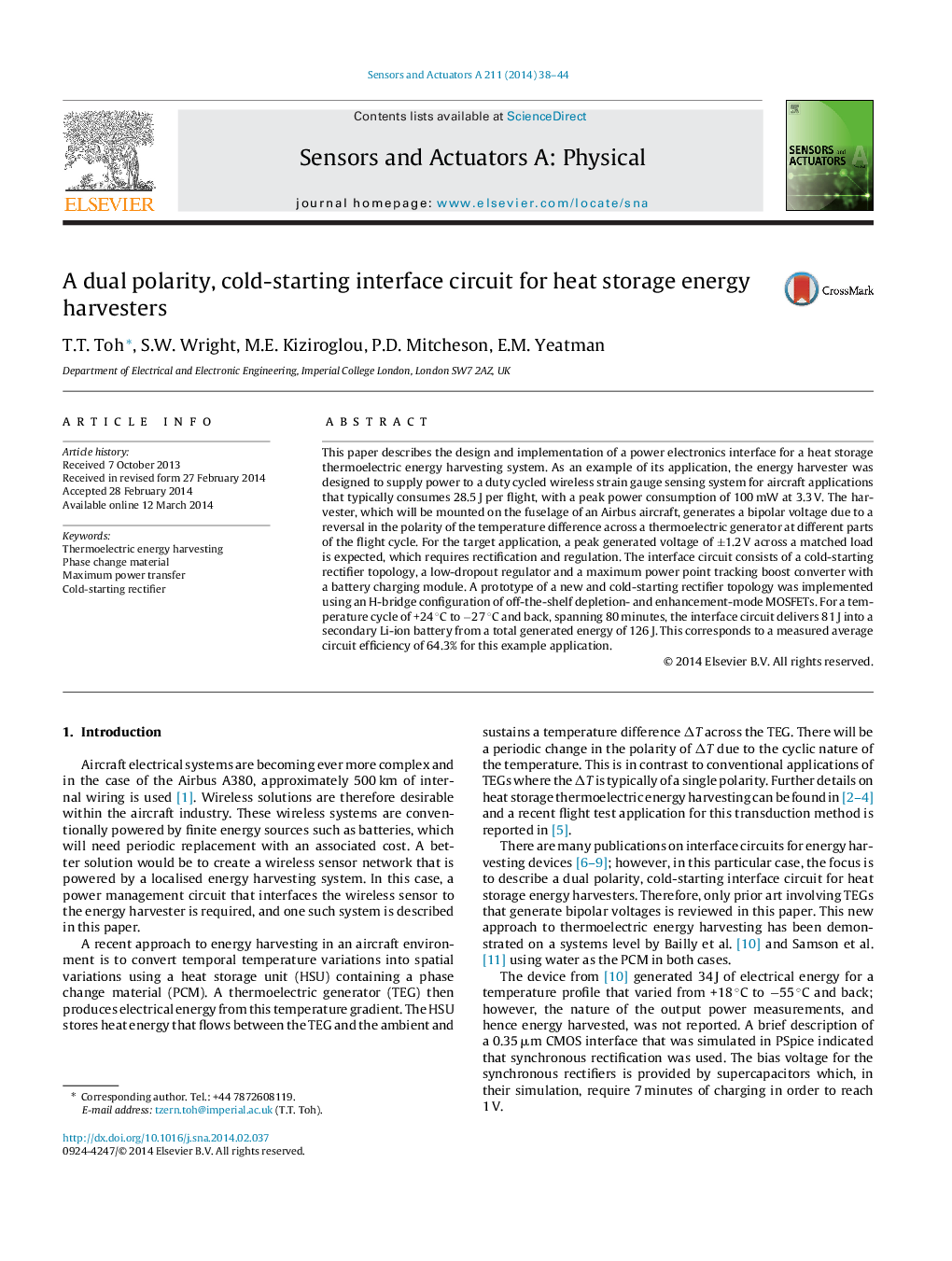| کد مقاله | کد نشریه | سال انتشار | مقاله انگلیسی | نسخه تمام متن |
|---|---|---|---|---|
| 737196 | 1461889 | 2014 | 7 صفحه PDF | دانلود رایگان |
• A new rectifier topology that is capable of cold-starting.
• Circuit does not require microcontroller, gate drivers, diode-based rectifiers.
• Circuit delivered 81 J into a Li-ion battery from a total generated energy of 126 J.
• Prototype has an efficiency of 64% for this example application.
This paper describes the design and implementation of a power electronics interface for a heat storage thermoelectric energy harvesting system. As an example of its application, the energy harvester was designed to supply power to a duty cycled wireless strain gauge sensing system for aircraft applications that typically consumes 28.5 J per flight, with a peak power consumption of 100 mW at 3.3 V. The harvester, which will be mounted on the fuselage of an Airbus aircraft, generates a bipolar voltage due to a reversal in the polarity of the temperature difference across a thermoelectric generator at different parts of the flight cycle. For the target application, a peak generated voltage of ±1.2 V across a matched load is expected, which requires rectification and regulation. The interface circuit consists of a cold-starting rectifier topology, a low-dropout regulator and a maximum power point tracking boost converter with a battery charging module. A prototype of a new and cold-starting rectifier topology was implemented using an H-bridge configuration of off-the-shelf depletion- and enhancement-mode MOSFETs. For a temperature cycle of +24 °C to −27 °C and back, spanning 80 minutes, the interface circuit delivers 81 J into a secondary Li-ion battery from a total generated energy of 126 J. This corresponds to a measured average circuit efficiency of 64.3% for this example application.
Journal: Sensors and Actuators A: Physical - Volume 211, 1 May 2014, Pages 38–44
